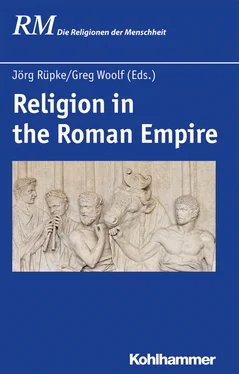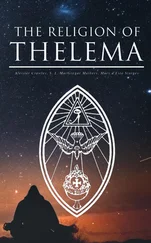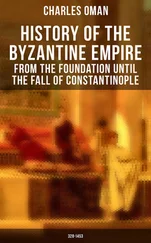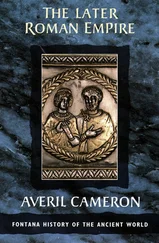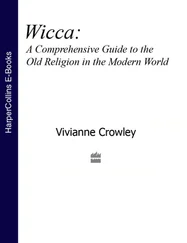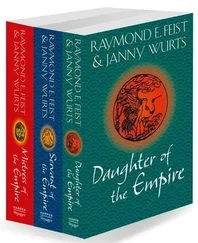Over the last decade a number of excellent general accounts of Roman religion have been produced, themselves building on a rich tradition of scholarship more than a century old. Some of these deal with the same sort of questions that exercised Roman scholars from the last century BCE on, men (and it was always men) such as Marcus Terentius Varro, Marcus Tullius Cicero, Verrius Flaccus and behind them a series of works now known only in fragments. Those first Roman experts on Roman religion were interested in particular priesthoods and religious rules. Why was the flamen of Jupiter not allowed to spend prolonged periods outside the city? They tried to distinguish elements of Greek or Etruscan origin from ancient local customs and more recent innovations. Some Roman writers, and some Greek ones too, tried to explain some more bizarre rituals such as the Lupercalia when young aristocrats ran half naked around the city striking women with leather straps, the Parilia which in some sense (but what sense?) celebrated the birthday of Rome, or the October Horse. And some ancient writers wondered about the origin of the gods, how they were related to similar gods worshipped by other ancient peoples and how to connect traditional myth with modern philosophy. Because the modern study of antiquity began as an exegetical process focused on the Greek and Latin classics, it was natural that much early scholarship dealt with the same questions that had puzzled the ancients. 1
Parallel to that sort of investigation have been attempts to capture the broader pattern of Roman religion by standing outside it. An influential tradition, one we may trace back to Fustel de Coulanges (1864), found the key to Roman (and Greek) religion in the structures of the city state. 2If ancient cities were fundamentally, perhaps even in origin, communities of coreligionists, then much of the shape of ancient religion could be understood as calqued on or coterminous with the shape of ancient civic societies. The boundaries of the citizen body coincided with the boundaries of participants in collective ritual or the boundaries of those whose religious actions had consequences for the community. Generally the same groups and individuals that controlled a given city-state—aristocrats and the senate in Rome, the demos and the ecclesia in Athens—controlled ritual. The most recent formulations along these lines—sometimes termed ›civic religion‹ or ›la religion poliade‹—remain influential. 3There are naturally many variations: some scholars treat this as a harmonious homology between the religious, the social and the political, a sign that these spheres were weakly differentiated in ancient thought, or that ritual was deeply embedded in social structure and political order. Some see polis religion as an ideological construction, created to serve the interests of the powerful and to legitimate their control of the state, always opposed to a less sharply defined field of heterodox views, deviant practices, superstitions and the like. Given most of our written sources for Roman religion derived from members of those ruling elites it is not always easy to know—at least not from texts alone—how contested their views of religion were.
The best modern accounts of Roman religion make the most of the written evidence for ancient belief and cult but do not allow these texts to determine the questions we might ask. One way to escape ancient definitions of the subject is to deploy comparative evidence. Greek, Roman and Etruscan rituals have long been compared, and at one time it was common to broaden the field of comparison to include other religions regarded as of common Indo-European descent. Fewer scholars are now comfortable with moving easily from a linguistic taxonomy to a family of related societies: in that sense the legacy of Dumézil 4is almost extinct. It has also become less common to explain Roman religion in terms of its supposed origins (Etruscan, rustic, Indo-European etc.). 5Most experts on Roman religion now try to elucidate particular rituals and institutions in terms of their contemporary context. So the Lupercalia as practiced in the late Republic has to have a significance in terms of the collective life of a city of several hundred thousand at the heart of vast and expanding empire, led by an elite self-consciously engaged in the creation of a distinctive cultural tradition that might rival that of the Greeks. The key question now is how to balance these contexts: which explain most, the urban? the imperial? the intellectual? or a mixture of these and others? Now we mostly approach Roman religion through synchronic rather than diachronic analysis, trying to understand rituals and utterances in the context of their performance, and we read texts not as authorities so much as as momentary crystallizations of discourse. 6Our focus on the wider context and the contemporary has meant that the social sciences—especially anthropologies of various kinds—have provided powerful tools for interpreting and imagining Roman religion.
Before outlining our own approach some comment is appropriate on how we use the terms Religion, Religions and Religious since there has been much discussion in recent years of how appropriate these ideas are to describe ancient and non-Christian ritual and belief in particular.
Religions are understood as traditions of religious practices, conceptions, and institutions, in some contexts even fully developed organisations. According to an important strain of sociological thought going back to Émile Durkheim (1858-1917), we are dealing here with social products, 7as a rule with groups of people normally living together within a territory, who withhold the central core of their life together, their shared orientation, from the necessity of daily discussion by investing it in forms of religious symbolism. There emerges a system of signs whose immanence is preserved by the performance of rituals, and which seeks to explain the world in images, narratives, written texts, or refined dogma, and to determine behaviour by the use of ethical imperatives, often by recourse to an effective apparatus of sanctions (for instance through the power of the state), but sometimes even without that implied threat. Many volumes within the series Die Religionen der Menschheit are following the first, tradition-based, and the second, geographically defined, line of understanding.
Such a conception of religion meets its limits when it seeks to explain religious pluralism, the enduring coexistence of different, mutually contradictory conceptions and practices, or the quite distinct relationship of individuals with religion on which lived ancient religion is focusing. This conception of Religion has already been attacked as being too closely oriented to ›western‹, and above all Christian religious and conceptual history, and criticized for its unquestioned and unquestioning ›colonial‹ transference to other cultures. 8It has similarly problematic ramifications when we seek to apply it to Antiquity. 9The reason for this also lies in the present. The dissolution of traditional allegiances frequently to be observed in our time is seen as religious individualism, the disappearance of religion, or even the displacement of collective religion by individual spirituality. 10This perspective then becomes associated with the complementary assumption that early societies and their religions must have been characterized by a high level of collectivism. We shall see how a problematic assumption in respect of the present day creates a highly distorted picture of the past. 11
But it is not the notion of religion that we have to drop. In demand is a concept of religion that enables us to describe the aforementioned changes in the social location and individual significance of religion. This can successfully be achieved by conceiving of religion from the standpoint of the individual and his or her social involvement. Only in rare instances does such lived ancient religion coalesce into networks and organized systems, to resemble what we normally categorize as religions, expressed in written texts that may then develop an enduring autonomous existence of enormous proportions.
Читать дальше
